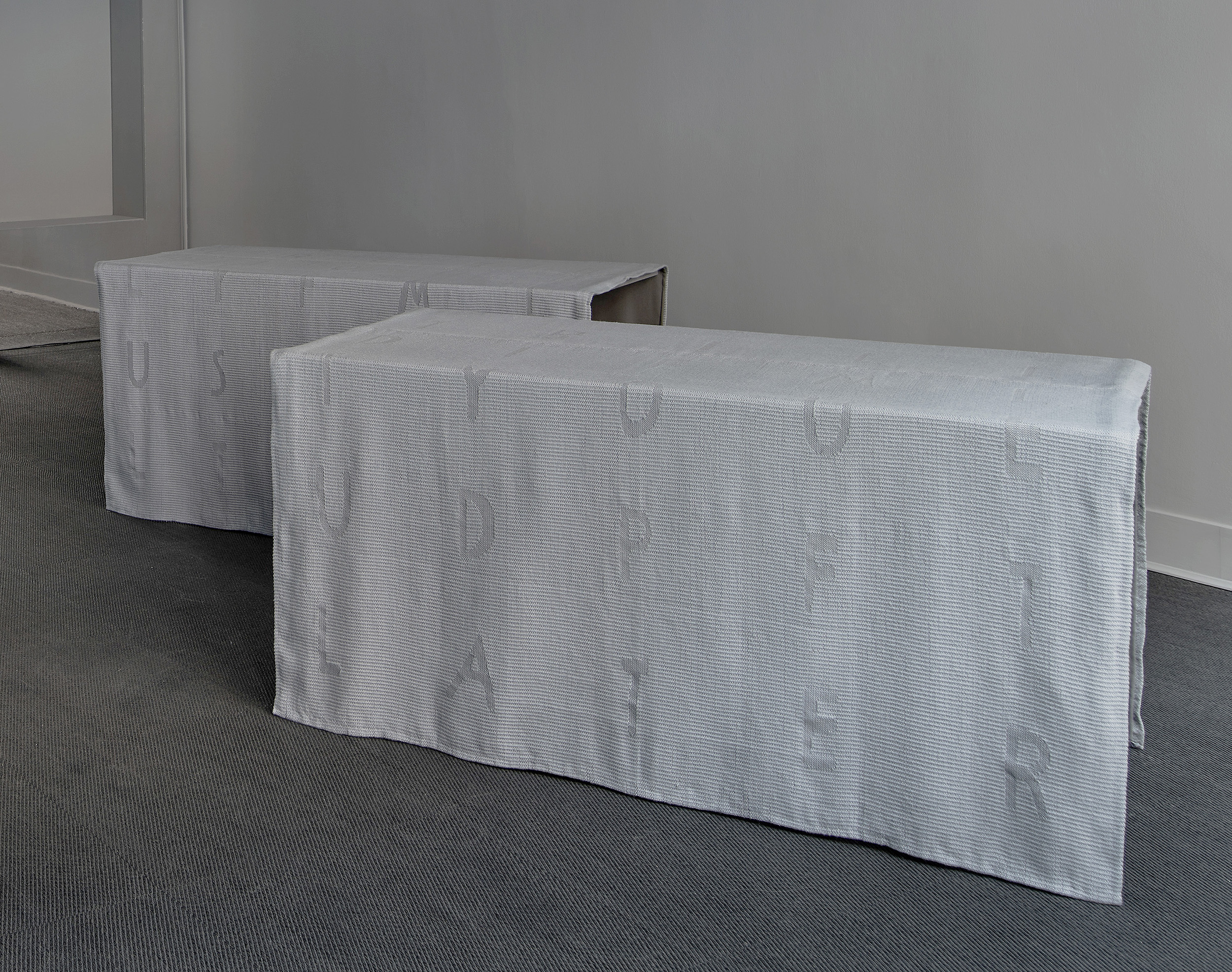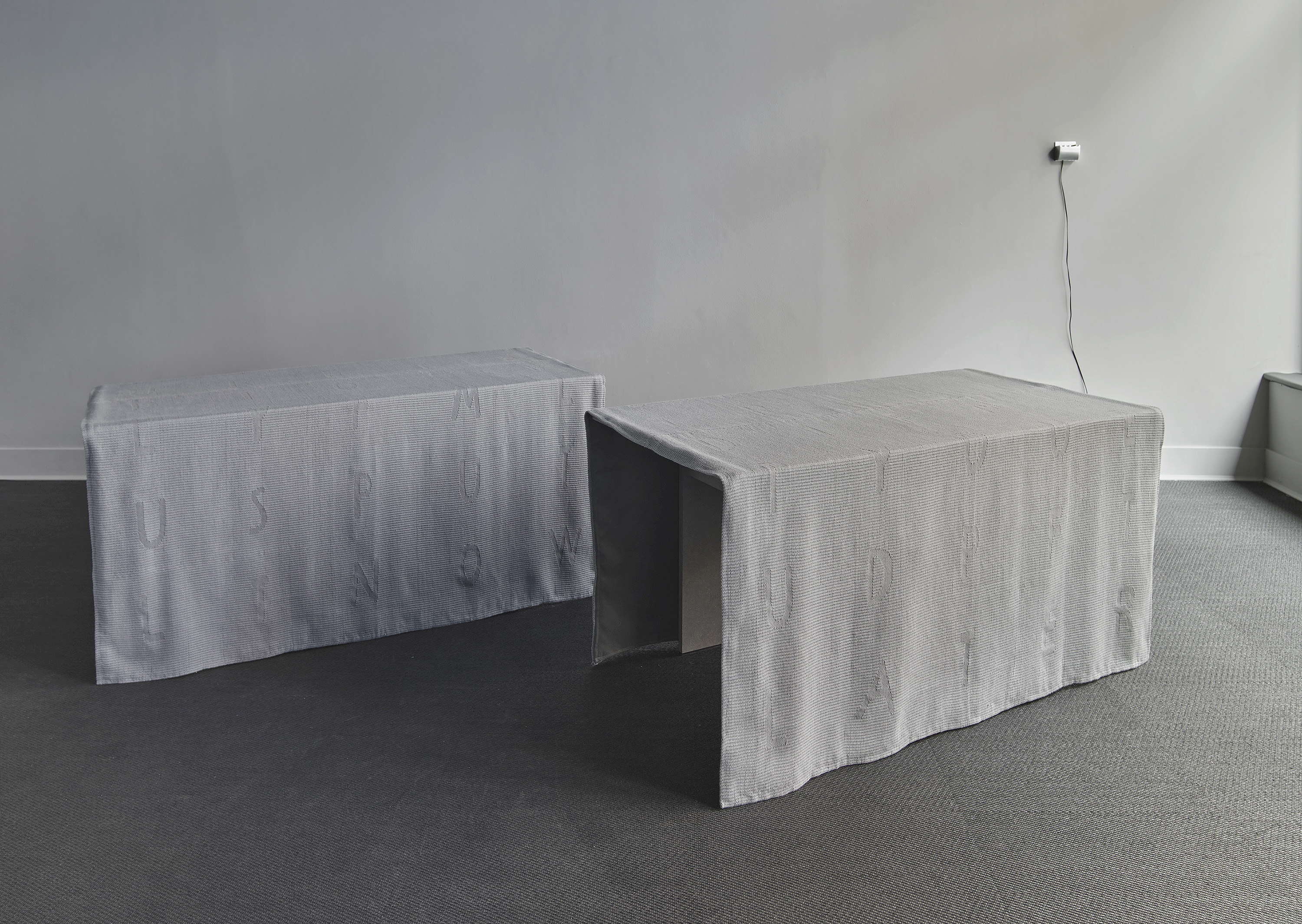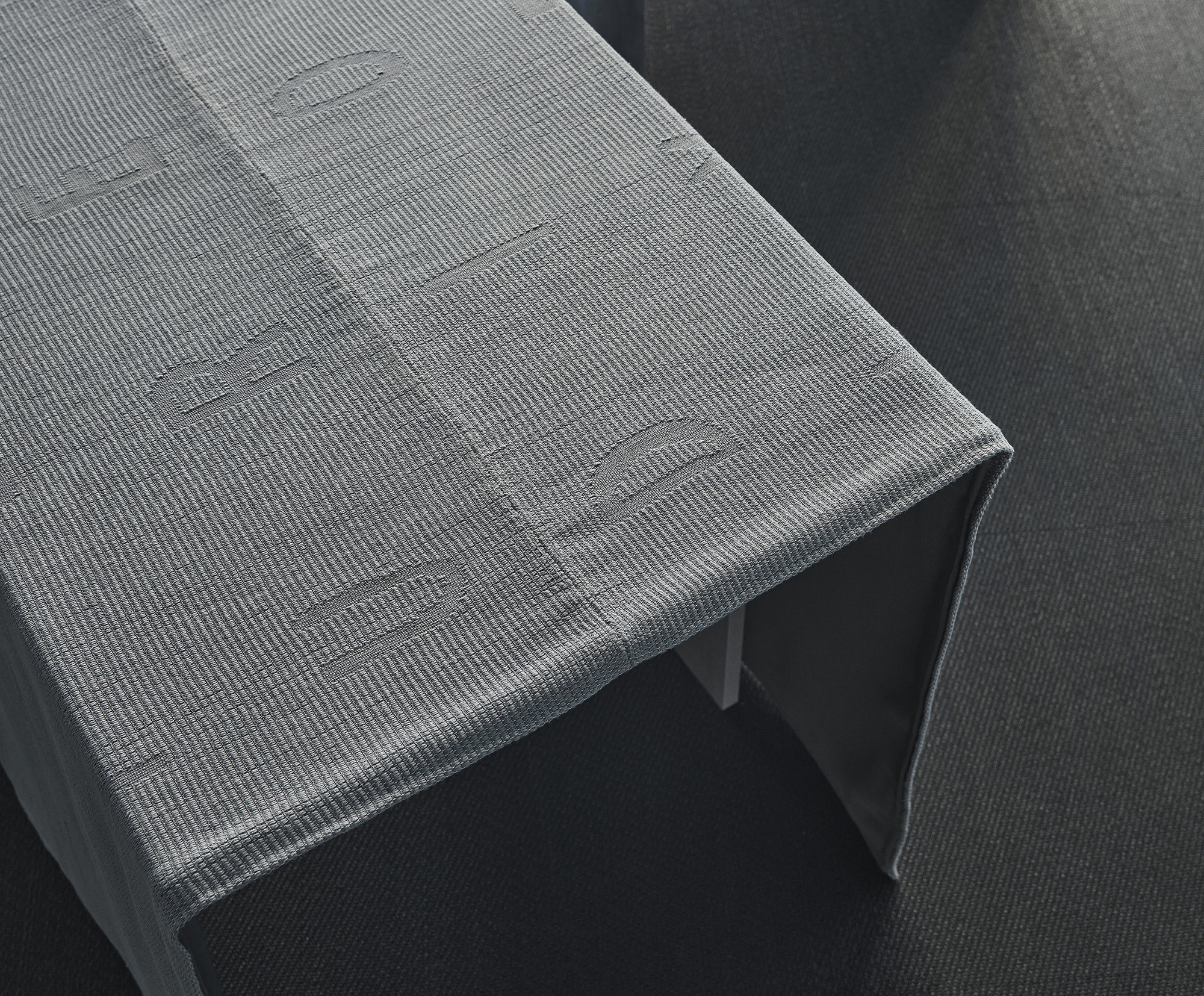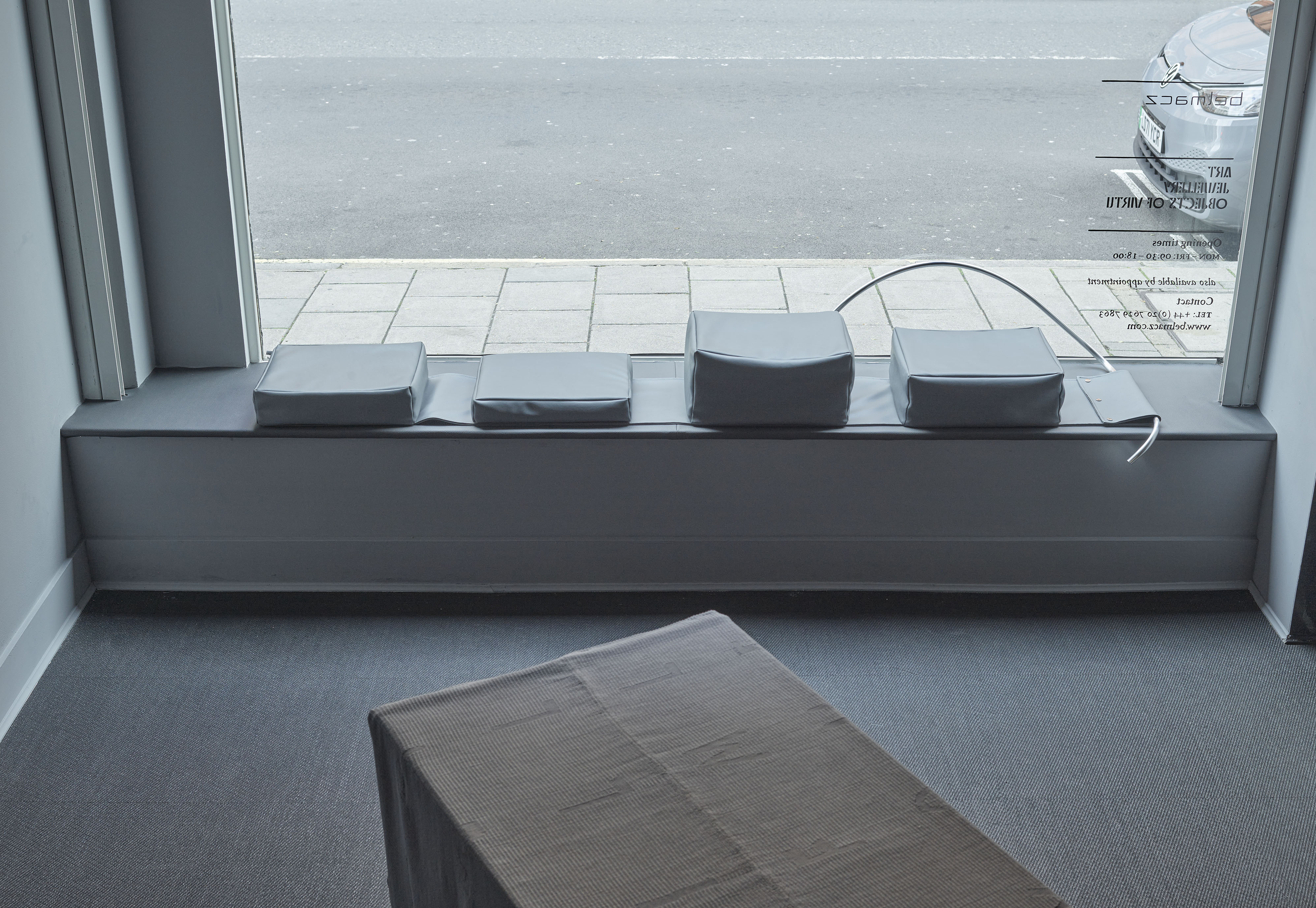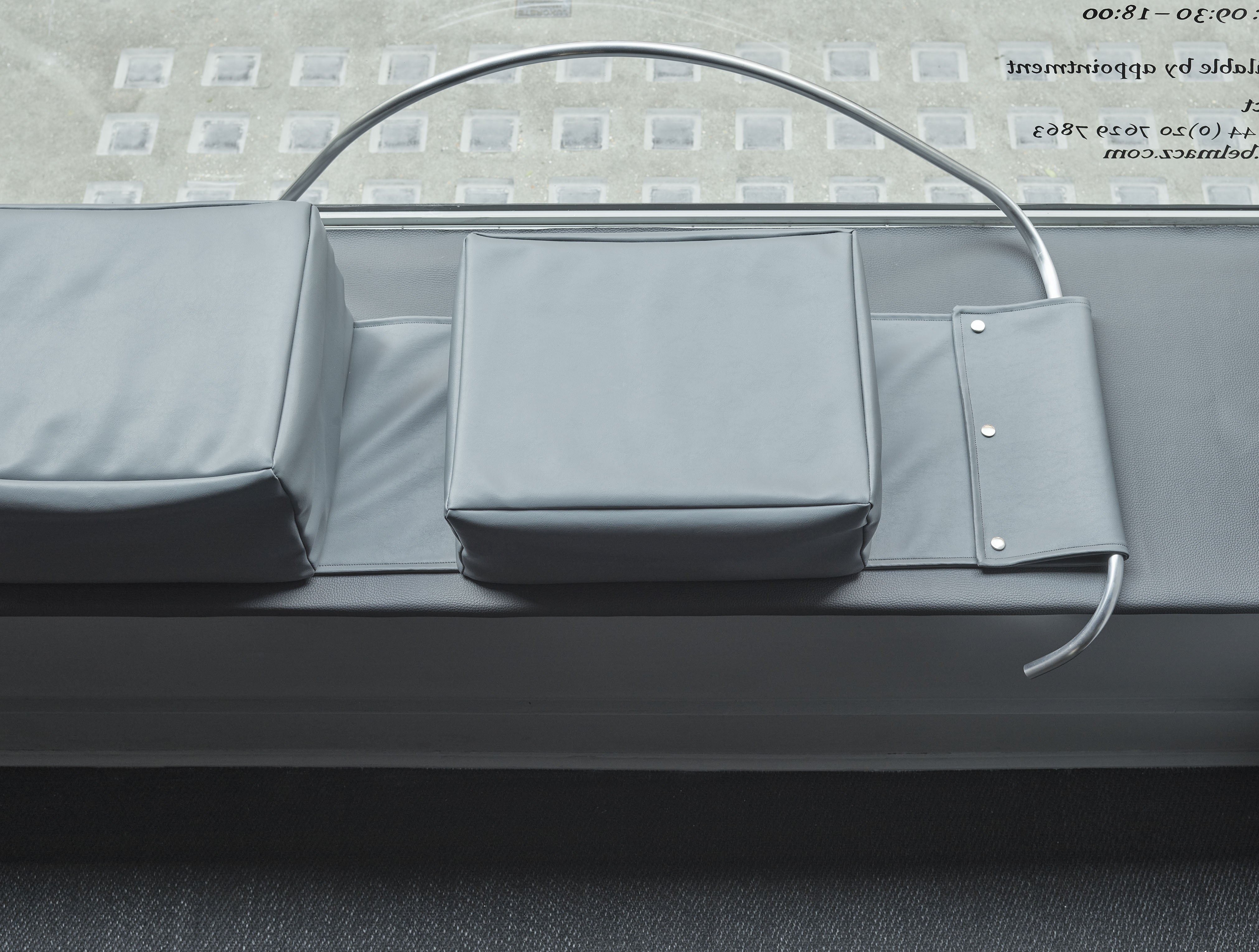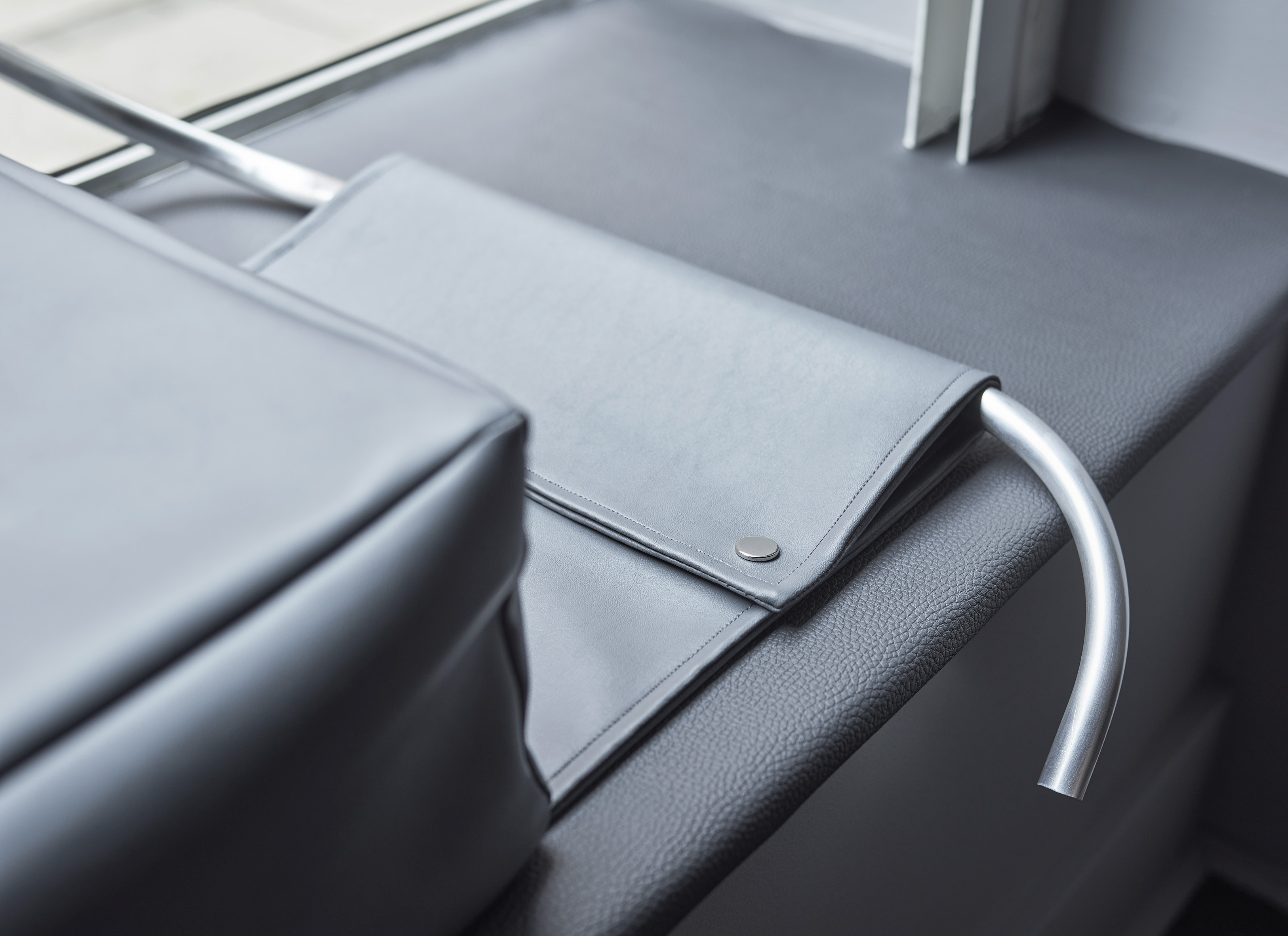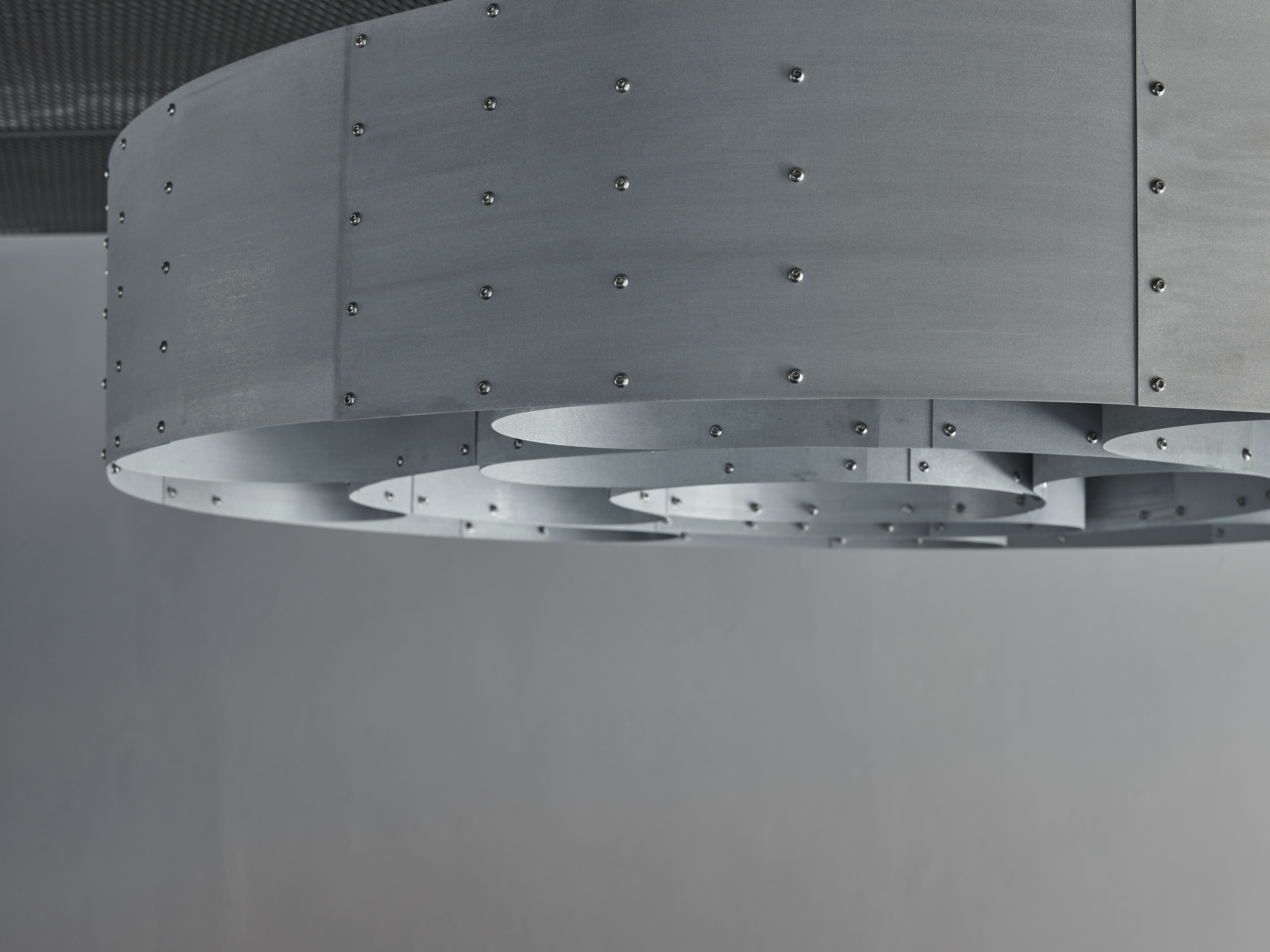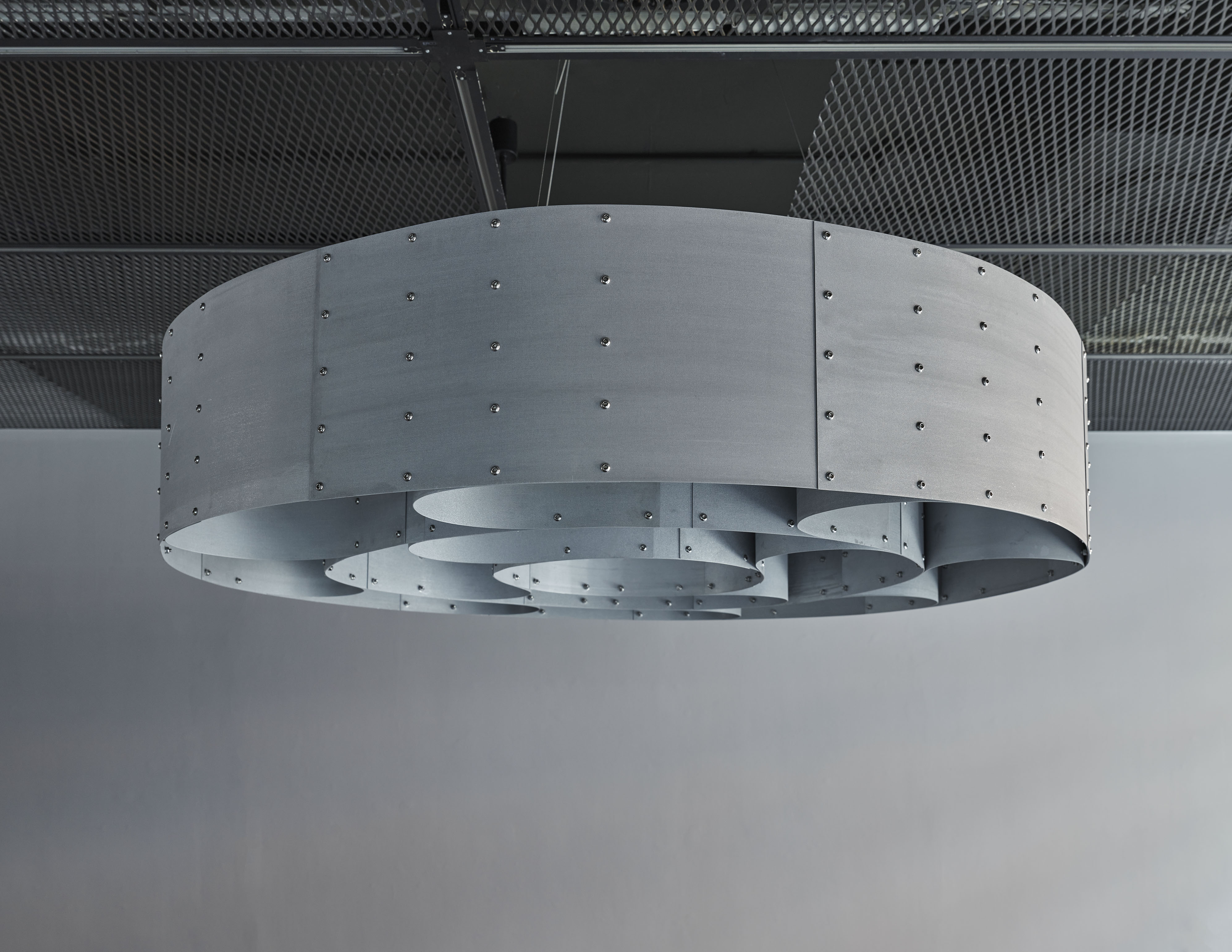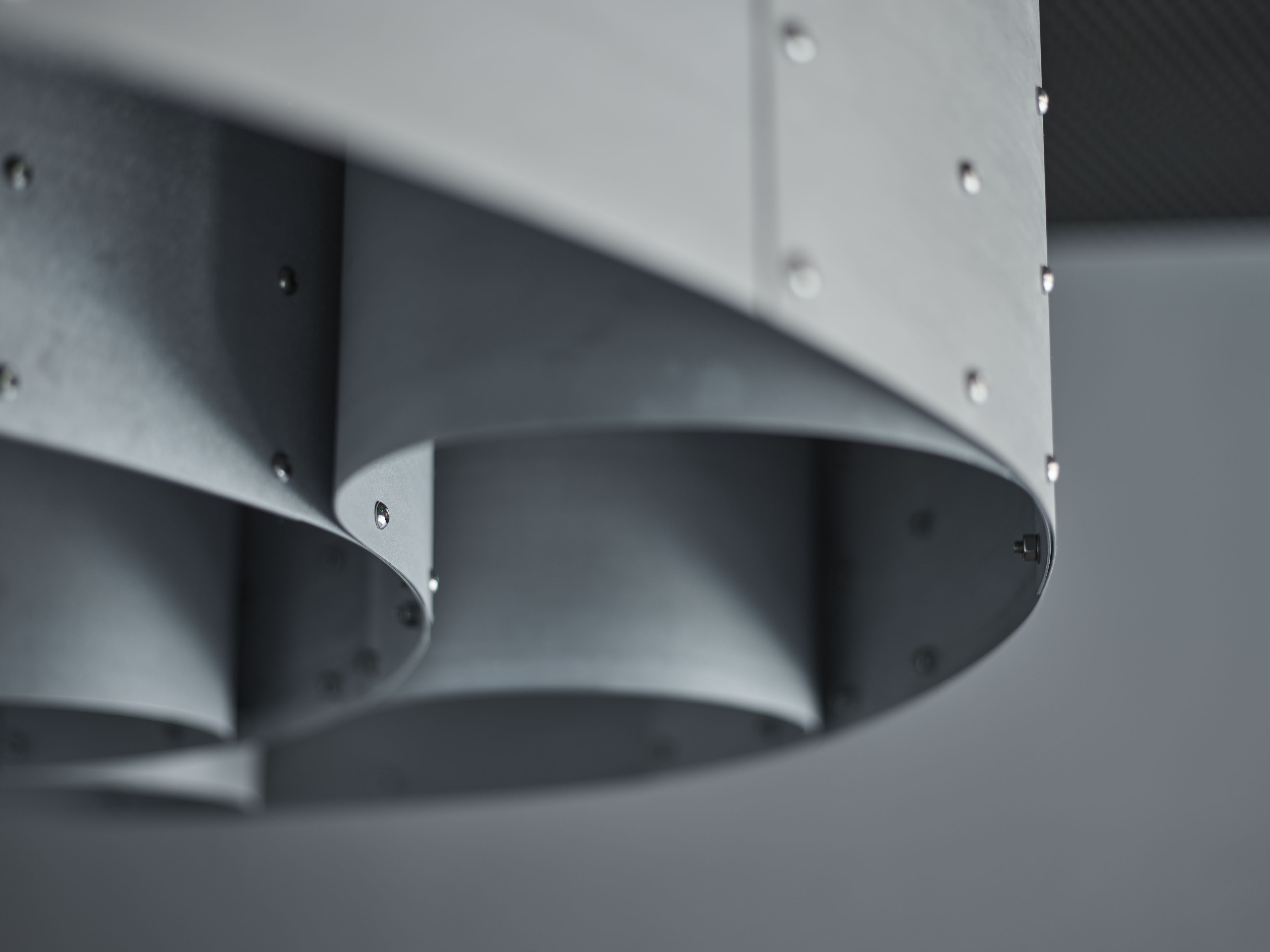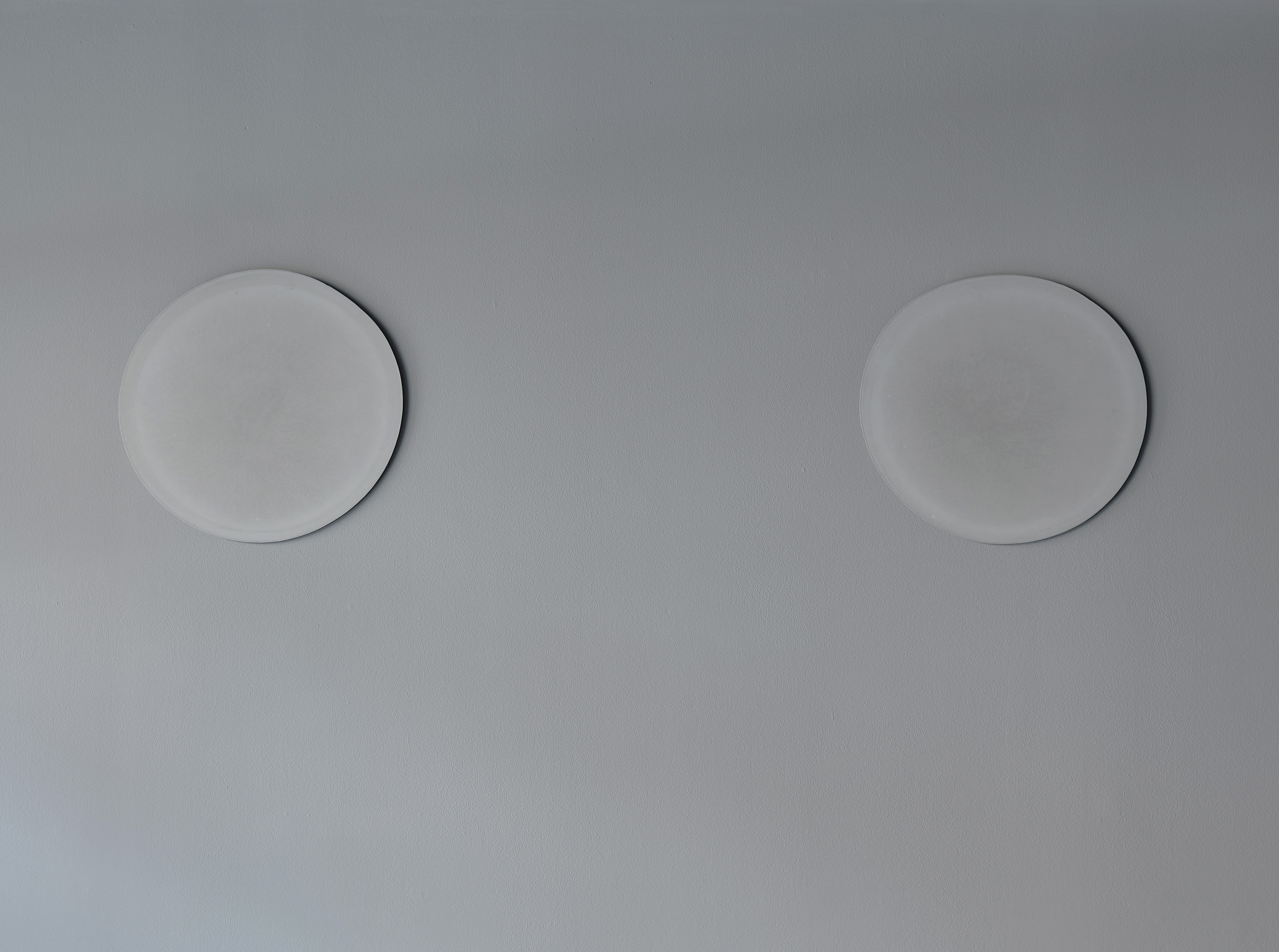Agata Madejska
No Meat without Bones
8 June 2022 — 29 July 2022
Illuminated and laid out bare. Through sculptural installation, that expand photo-graphic processes beyond the printed page, Agata Madejska’s practice considers systems of power and how we come to operate with and in different socio-political architectures. For her first solo exhibition with Belmacz, No Meat Without Bones, Agata builds on her ongoing research into the roots of differing socioeconomic models; be these the politics of the state or of the home.
Here, through close readings of feminist writings, Agata weaves together historical Communism and the ‘Transformation Years’ of post-Communist Poland, using her own familial relations to question the systematic nature of dependencies, social contracts, fluctuating political contexts, and wider societal transformations.
Tracing the weave of Agata’s research, this exhibition takes us back to Friedrich Engels’s 1884 treatise The Origin of the Family, Private Property and the State. In this anthropological text, Engels questions androcentric thought systems, focusing on the position of women in early communities, exploring how these forms of being with and together developed into modern forms of social organisation based upon class and private property. The treatise has had a strong influence on feminist debates; suggesting that social inequality arises not only due to the actions of the ruling elite and state but through the ways in which patriarchal power is embodied in domestic structures.
Taking a closer look at the death of real Polish socialism in the 1980s, and the following years of turbulence as Poland transitioned into a market based economy, the work included in No Meat Without Bones emerges from these greyed mists. Working from a personal positionality, whilst rooting her research in original film footage, interviews, and texts, the foreground of the exhibition places an emphasis on the materiality of speech; specifically, its ability to disturb how power wafts through both our private and public lives. In doing so, No Meat Without Bones makes palpable some sense of being with and in different structures of control; offering a slivered glimmer into a world not yet.
Questions to the artist
Briefly, can you describe some of the historical reference woven into No Meat Without Bones?
My work has always questioned how we grow within systems — personal, cultural, political — and how we navigate these. This project has been spurred on by the observation of contemporary political narratives. Specifically, the acute radicalisation of post-truth rhetoric and how this has been enmeshed within virtual disinformation. Looking at this changing political landscape, I saw connections to earlier moments of political fluctuation; connections that made me reflect on my own relationship with ideological narratives. And it is from there that this exhibition has developed.
My opening point of reference was Friedrich Engels’ 1884 treatise, The Origin of the Family, Private Property, and the State. This text engages with the development of society by examining matrilineal clans within what Engels’ calls “primitive communities.” In the text he describes the disempowerment of women through the rise in inequality which came with men’s drive to own private property. Following threads set out by thinkers such as Silvia Federici and Carole Pateman, I began to trace a line of matrilineal connections that led me to reflect on the relationship between the political transformation of the Polish state in the late 1980s — when the country shifted from the Polish People’s Republic to the democratic Third Polish Republic — and the contemporary attraction to right-wing populism.
In particular, it led me to the ways in which political powers wheeled rhetorical devices (both visual and linguistic) to occlude, even suppress, the position of woman and domestic labour in their battle for state control. I think the pandemic highlighted this. It seems little has progressed, on a societal level, since the civil rights movement in the 1970s, when Silvia Federici argued in her “Wages for Housework” campaign that women’s unpaid domestic work is a central element of capital accumulation.
Can you speak a bit more about the personal connections in the exhibition?
In this show I get quite close to what shaped my personal political awareness, which is the experience of communism as a child, the collapse of it, and the aftermath of volatile Polish politics since the 1990s. My earliest childhood memories are of political events, the constant sound of radio or TV, the latter being switched on to watch the news, and the attempt to make sense of what seemed to everyone like the end of the world. And in a way it was. And then we moved to Germany.
I experienced the move as a cultural shock. It left me with a huge sense of anomie, that in turn laid the foundations for my interest into rifts, shifts and gaps, possible tensions, glitches and simulations of alternative spaces and indeed actions.In my work I’m often looking at things which are trying to culturally anchor, which put us in context and are meant to give us a meaning and a sense of belonging — these might be objects, places, events, words, or gestures.
Nowadays, one is accompanied by the constant feeling of not being able to grasp anything as an individual in the fragmented here and now. This raises questions about individual and institutional identities; how power relations are expressed in social contracts, languages, architectures, or objects of symbolic value? Where do misunderstandings, fluctuations and cracks arise? This can perhaps be summed up as my interest in how we deal with the architecture of systems, history, and its after-effects today. It also corresponds with the way I work and how I deal with photography, which still plays an important role in my practice, even though mostly as an artefact. It relates, for example, to our distrust in the medium and at the same time a complex relationship of dependency. My research is about working through this layering of social and political mechanisms, asking questions in order to allow for the possibility of subversion and / or my own manipulation.
Can you speak about the physicality of some of the artworks included in the exhibition?
Coming from the photographic background I see an exhibition as a series of fragments and crops, simulations and possibilities, interrelations and dependencies — images / mirages. The works included in No Meat Without Bones share as set of referents — both formal and contextual. In this way they appear to be in conversation with one another; or at least my aim is for them to cross-pollinate one another. Therefore, allowing us to grasp some of these fragments.
The textile piece, You Feed From Us Now, We Will Bill You Later has been woven from the yarns of a recently closed spinning mill in Germany; this mill was the sister site to Friedrich Engels’ cotton mill in Salford. With a font designed by my son Teofil Otto (the great-great-great-nephew of Engels), the work is set up as a word game and reads, You Feed from Us Now, We Will Bill You Later, a comment made by Cardinal Stefan Wyszyński in the summer of 1980 after the successful negotiations between representatives from the Polish Government and the opposition, Solidarność. The role of the Catholic church in the fight against communism throws a long shadow on Polish politics (with misogynistic and discriminating policies, that have reappeared today). I have hijacked this seemingly random comment, which once echoed as a threat, transforming the slogan into a dormant protest poster.
Agata Madejska, You Feed From Us Now, We Will Bill You Later, 2022
jacquard hand-weave, cotton, coloured mdf tables, 130 x 200 cm (each)
Agata Madejska, You Feed From Us Now, We Will Bill You Later, 2022
jacquard weave, cotton, coloured mdf tables, 130 x 200 cm
Agata Madejska, You Feed From Us Now, We Will Bill You Later, 2022
jacquard weave, cotton, coloured mdf tables, 130 x 200 cm
Agata Madejska, You Feed From Us Now, We Will Bill You Later, 2022
jacquard hand-weave, cotton, coloured mdf tables, 130 x 200 cm (each)
No Cars, No Power is a poem based on the original jokes and metaphors used during negotiations between the all-male representatives of the Polish Government and opposition at Magdalenka in 1989, as well as during the official workshops of the Round Table meetings in 1989, and during the meeting between Margaret Thatcher and Wałesa in November 1989. Enriched by comments and questions raised during interviews with the women of Solidarność, the narration pays homage to their active fight against communist oppression.
Agata Madejska, No Cars, No Power , 2022
iPad, speaker
4K video / audio 4:34 min
Seat for a Young Boy, a nomadic structure that can be easily dismantled and transported, touches upon the same debate. Rather than a clone of modernist furniture, the difference in height use for each of the seat’s modulations riffs off ideas around domestic power and how this is staged.
The ceiling structure Echo Chamber resembles a chandelier common to state rooms across Poland, a feature present in many of the political negotiations of 1989. But in a way it also resembles the ancient Slavic symbol of Perun — the six-petal rosette, which in many Eastern European cultures is still being carved into wooden crossbeams to protect the household from lighting, fire, and catastrophes. In relation to post-transformation conspiracy theories, and polarising right-wing narratives, I feel the symbolic qualities of this solar shape could be re-purposed now to protect a household from disinformation.
Agata Madejska, Echo Chamber (1), 2022
oxidised aluminium sheeting, stainless steel , 150 x 30 x 150 cm
Agata Madejska, Echo Chamber (1), 2022
oxidised aluminium sheeting, stainless steel , 150 x 30 x 150 cm
Agata Madejska, Echo Chamber (1), 2022
oxidised aluminium sheeting, stainless steel , 150 x 30 x 150 cm
Agata Madejska, Echo Chamber (1), 2022
oxidised aluminium sheeting, stainless steel , 150 x 30 x 150 cm

Agata Madejska, The End of It, 2022
cigarette prop, ash, aluminium ashtray, smoke generator, mineral oil, silicone, power adapter, cables, 8x8x8.5cm
The End of It, a self-smoking cigarette, relates to both the forgotten women of Solidarność (the Polish trade Union), who smoked copiously as they ran the Union’s underground publishing and broadcasting services alongside caring for their families, and also the 1988 TV debate between Alfred Miodowicz (of the All-Poland Alliance of Trade Unions) and Lech Wałesa (the leader of Solidarność) — a turning point in Polish politics, where a clock was used as an anti-censorship device.
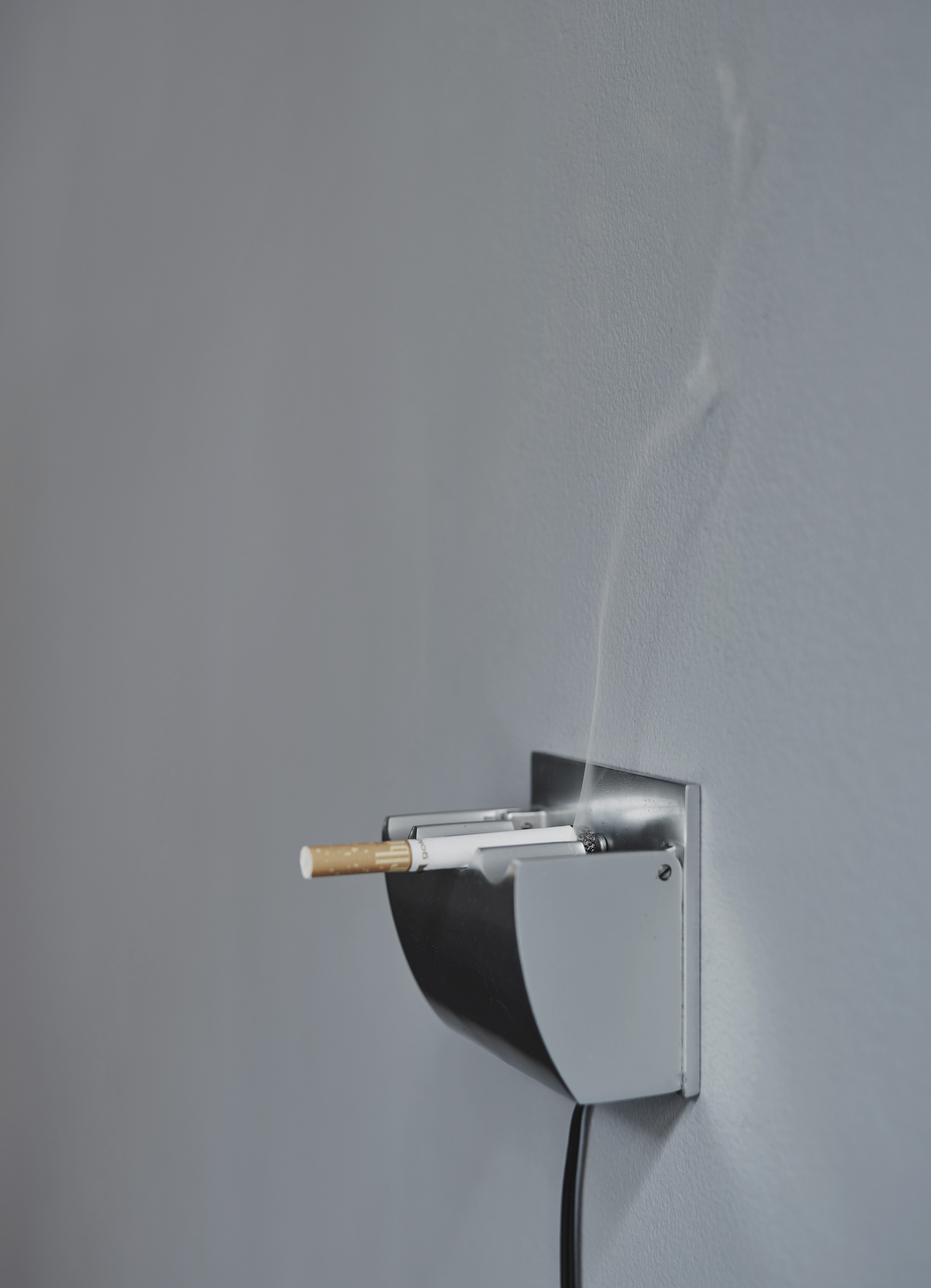
Agata Madejska, The End of It, 2022
cigarette prop, ash, aluminium ashtray, smoke generator, mineral oil, silicone, power adapter, cables, dimensions variable
In Pendulum we are watching the soft movement of the façade of Debenhams on Oxford Street — which is in the process of being decommissioned. With its scale like rendering, to me the building represents something of a capitalist ouroboros — a serpent eating its own tail. In 2013, the initial refurbishment cost of the building was 40 million pounds, this year the building was sold for 400 million pounds. Thinking about what Debenhams signifies to the public — a domestic department store — it is interesting to witness how value is accrued through forms of mass consumption as well as the monumental refuse.

Agata Madejska, Pendulum, 2022
4K video, 26:10 min
Overseeing the whole exhibition, On & Off (Tidal Follies) are two light-sensitive jesmonite ‘moons.’ Created using photographic processes, and lingering high on the gallery’s walls, their observing nature leads one to question our dependency on the all-pervading photographic image.



